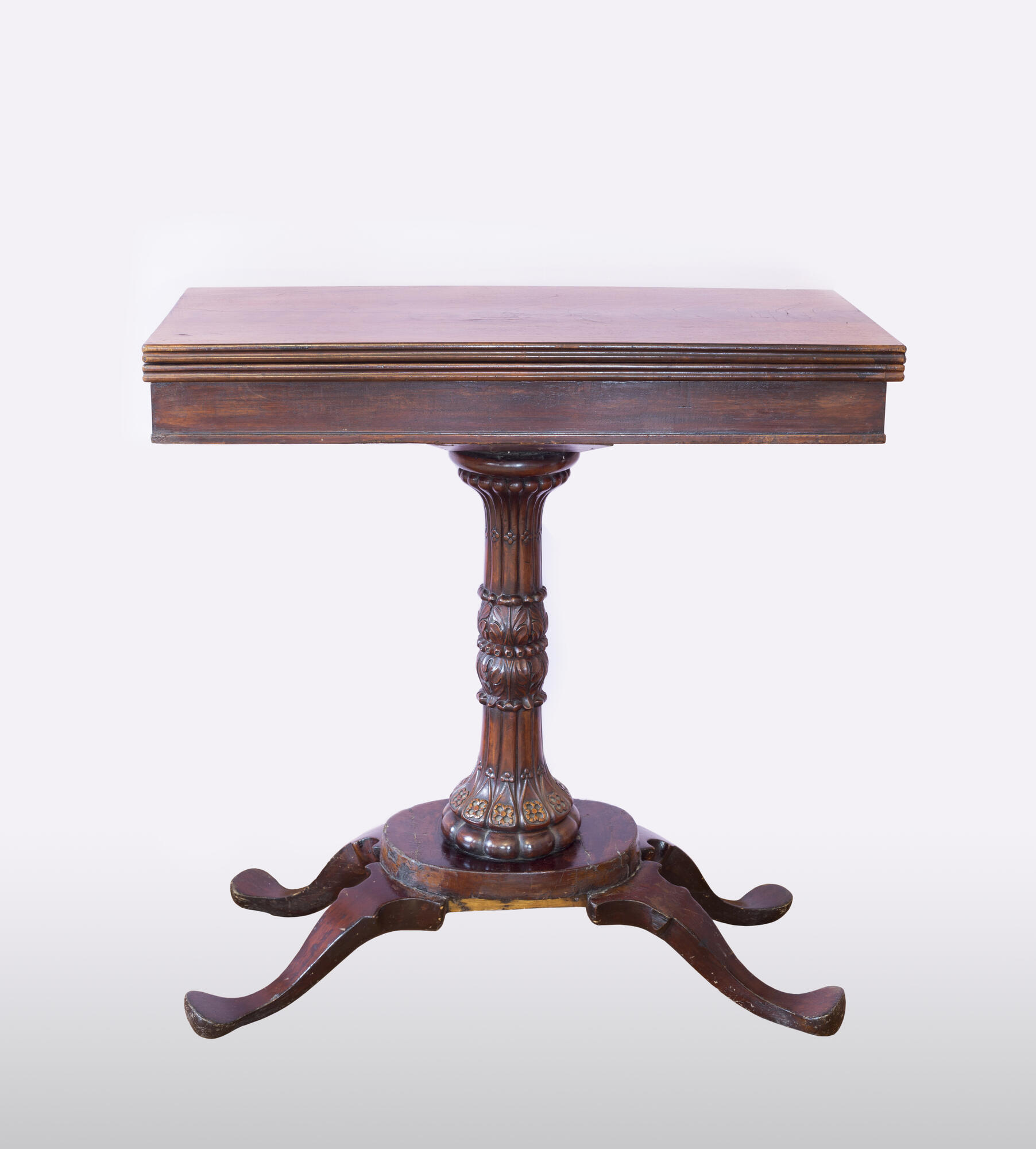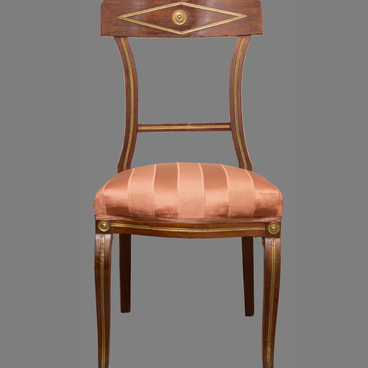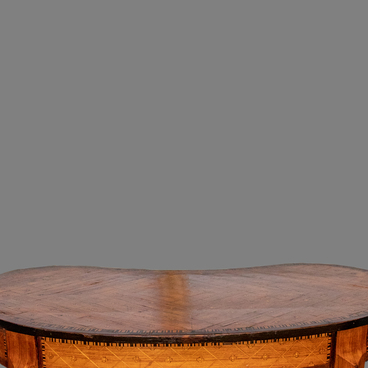The card table presented in the exhibition is made in the Empire style. It has a rectangular folding tabletop. Its inner surface is covered with green cloth. The underframe repeats the shape of the upper board. The support in the form of a tall slender column, decorated with carved fluting — the vertical grooves — and floral motifs, rests on a small oval-shaped base on four curved legs. They taper towards the middle and are rounded at the bottom. The surface is finished in mahogany veneer.
The Empire style dominated in interior design in the first quarter of the 19th century. The Empire furniture made by Russian craftsmen was distinguished by carved sculptural elements in the form of atlases, griffins, eagles, as well as legs made in the form of animal paws.
Card tables, or piquet tables, appeared in the 16th century in Spain, as card games were very popular. Such tables had a folding tabletop with a green cloth cover to prevent the cards from slipping on the wooden surface. In addition, players could draw on it when they needed to count.
Card tables have always been symmetrical and strictly proportional. Initially, this feature allowed all players to occupy the same space at the table and play on equal terms. Most playing tables were square, but there were also triangular or pentagonal ones.
Card tables were popular throughout the 19th century also due to their versatility. Folding tables appeared in the 18th century. In the daytime, vases with flowers were displayed on them, and in the evening, when guests arrived, they were unfolded to play cards and the cloth-covered side became the outside. Later, sliding or extendable tables came into fashion, whose top rotated 90 degrees, as well as tables-transformers, which, like origami, could be folded on all four corners. In time, drawers for storing small items and playing equipment were added to the tables. This model was called the ‘bureau’.
It was mentioned in the 1848 ‘List of furniture in the public houses of the Votkinsk factory’ that there were four card tables and four ‘half-card tables’ in the house of the mining chief, Pyotr Tchaikovsky’s father.
The Empire style dominated in interior design in the first quarter of the 19th century. The Empire furniture made by Russian craftsmen was distinguished by carved sculptural elements in the form of atlases, griffins, eagles, as well as legs made in the form of animal paws.
Card tables, or piquet tables, appeared in the 16th century in Spain, as card games were very popular. Such tables had a folding tabletop with a green cloth cover to prevent the cards from slipping on the wooden surface. In addition, players could draw on it when they needed to count.
Card tables have always been symmetrical and strictly proportional. Initially, this feature allowed all players to occupy the same space at the table and play on equal terms. Most playing tables were square, but there were also triangular or pentagonal ones.
Card tables were popular throughout the 19th century also due to their versatility. Folding tables appeared in the 18th century. In the daytime, vases with flowers were displayed on them, and in the evening, when guests arrived, they were unfolded to play cards and the cloth-covered side became the outside. Later, sliding or extendable tables came into fashion, whose top rotated 90 degrees, as well as tables-transformers, which, like origami, could be folded on all four corners. In time, drawers for storing small items and playing equipment were added to the tables. This model was called the ‘bureau’.
It was mentioned in the 1848 ‘List of furniture in the public houses of the Votkinsk factory’ that there were four card tables and four ‘half-card tables’ in the house of the mining chief, Pyotr Tchaikovsky’s father.



